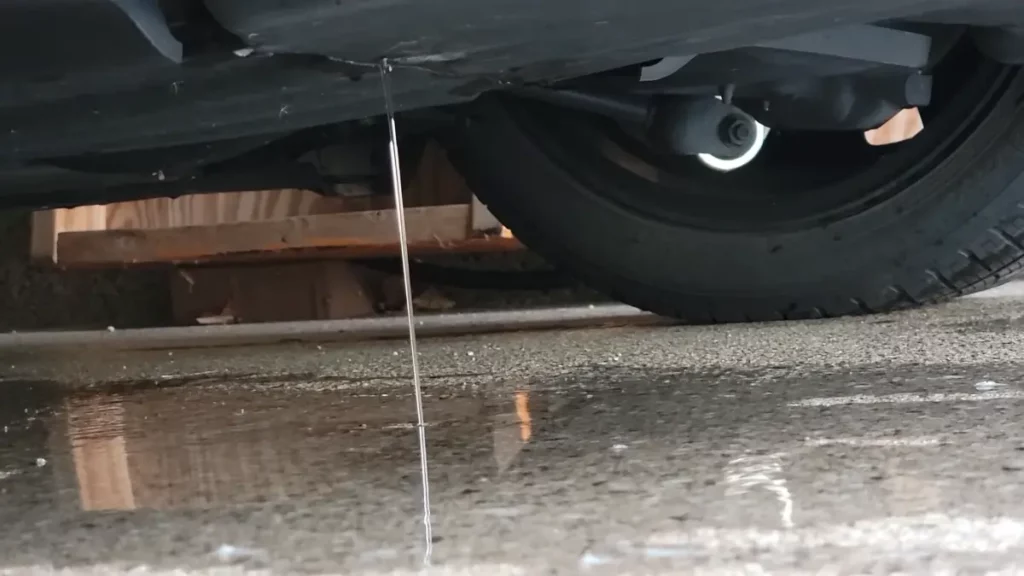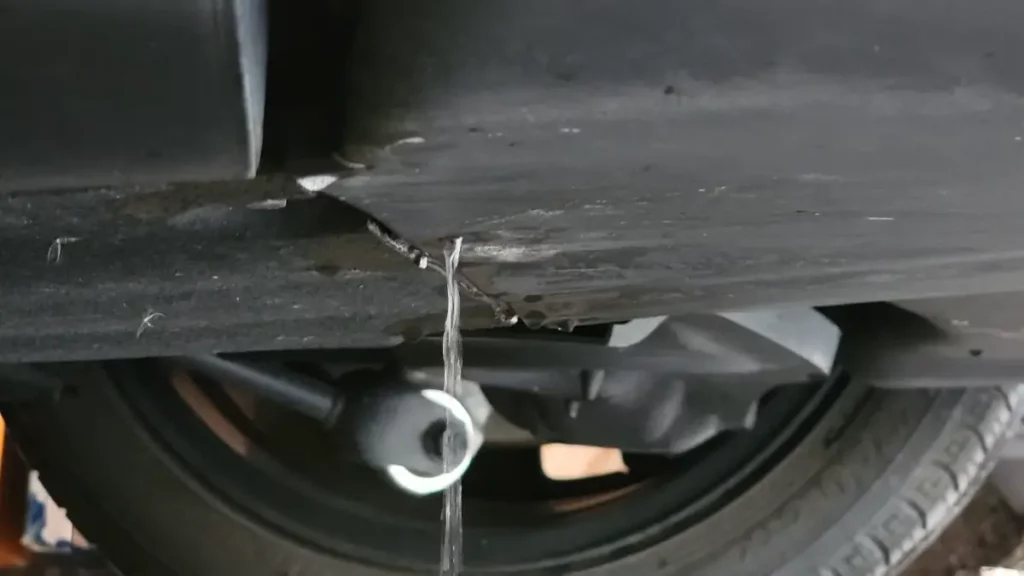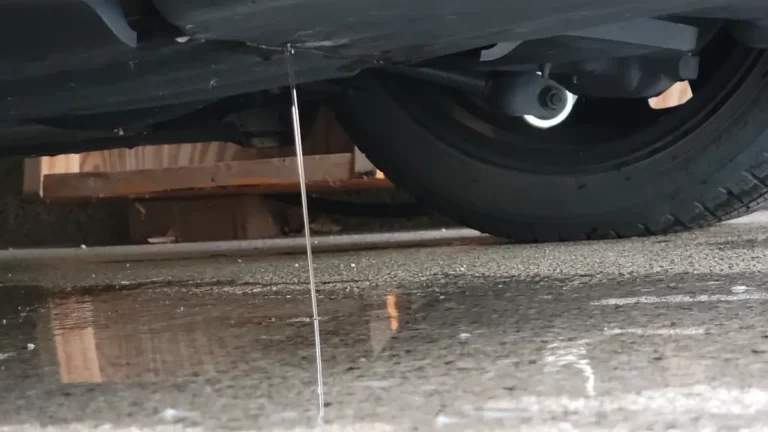Tesla leaking water underneath can occur by clogged drainage channels, for example, can cause moisture to seep into the underbelly of the car, causing water to leak below a Tesla. Damaged seals can also be a reason.
Verify that components, such as the battery cover or door panels, are correctly sealed. Clean drainage channels if you find something is with channels.

Why Is Leaking Water Underneath in Tesla Risky?
You must realize that it is a serious concern if you notice that your Tesla is leaking water underneath. This issue can certainly bring danger to the car’s performance, long-term integrity, and safety.
Several serious problems can develop when water seeps into the undercarriage. It could result in electrical issues that could potentially have an impact on crucial systems like sensors, batteries, or control units.
As water builds up and stays in contact with different parts, it may trigger corrosion and progressively damage important elements of the car. When the structure fails from corrosion, safety risks can develop over time.
Additionally, water entry can harm electronic components, costing money to replace and posing a risk to safety if important systems fail suddenly.
Not only that, water contact with the Tesla’s battery or electronics could result in permanent harm. It would reduce the vehicle’s longevity and overall performance.

Why Is Tesla Leaking Water Underneath (Solutions Added)
Due to a variety of reasons, Tesla vehicles may have water leaking from underneath:
Clogged Drainage Channels:
The buildup of waste, such as leaves, and dirt in locations like the sunroof drains or around the windshield, can result in clogged drainage channels in a Tesla.
Water cannot drain through these channels well when they are blocked. Thus, it causes leaks underneath the car.
Fix:
To get rid of this issue, what you first need to do is regular inspection and cleaning.
If you come across any obstructions or debris, carefully remove them. To clear these, you can utilize air pressure or a soft brush. Make sure to remove all debris from the passages.
Also, a mild water flush helps loosen and clear blockages from tough clogs. Clear the channels by applying low-pressure water using a hose or spray nozzle.
Faulty Seals in the Car:
Your Tesla may develop damaged seals around its doors, windows, or other openings due to normal wear and tear. As a result, you may face accidents.
The interior of the car can become wet when these seals are faulty since they can no longer effectively endure water.
Fix:
It’s necessary to quickly change any damaged seals that you find. To get the appropriate repair seals for your model, contact Tesla repair services or parts suppliers.
It is important to install seals properly while changing them.
Who doesn’t want a longer lifespan of the parts of their car? To ensure that Tesla users can apply a silicone-based seal conditioner or protectant to the parts. This can maintain the silicone or rubber flexible and resistant to external damage.
A/C Water Stuck Under The Car
It might be a serious problem if the water vapor from your car’s air conditioner seeps inside or becomes trapped by the chassis. The release of liquid from the air by air conditioners is simple to occur. But, this is not the same case for Tesla.
Because there isn’t an internal combustion engine (ICE) that can warm and evaporate the condensation. The air conditioner produces more water. As a result, sand and water build in the cars’ underneath which causes water leakage.
Tesla 3 users have mostly reported this issue.
Fix:
There is a drain hose on your air conditioner. Check to see if the drain is either inside or outside. Using an easy rubber hose connection at the drain’s end, the water can flow directly to the ground rather than over the underside of your car.
Extreme Weather Conditions
Bad weather, such as continuous rainfall, or snow, can make it difficult for a vehicle’s drainage and sealing systems to function properly. Such a condition may result in water leakage.
When you might be facing bad weather, water pressure, and volume may go higher than the vehicle can handle safely.
Fix:
Consider leaving your Tesla in a coated space during severe weather to minimize its contact with water. Avoid locations that frequently overflow.
When your car has already faced poor weather, you need to check the signs of water leakage.
If internal water damage occurs, dry out damaged areas to avoid the growth of mold or mildew. To help with drying, remove wet things, and use fans or dehumidifiers.
Read Also: Why Is the Tesla Passenger Airbag Off? (Solutions Added)
Frequently Asked Questions [FAQs]
Does Tesla leak when the AC is on?
It is true that as the air is conditioned, the evaporator contact temperature falls below the dew point for humid air. It causes the entrained moisture to condense.
At the evaporator’s base, condensation pours out which results in leakage.
Why is my car leaking water but not overheating?
You may have an exterior, internal, or radiator cap water leak. The expense of repairing a coolant leak will increase depending on how long you wait.
Is it normal for a car to leak water underneath in Tesla?
No. To stop water from getting inside the car or building up underneath it, modern automobiles, like Tesla come with a variety of water-resistant elements. Any incidence of water leakage beneath the vehicle is often an indication of a problem or malfunction.
Why is there a puddle of water under my Tesla?
The car is not leaking if there is only a tiny puddle under the vehicle; this is quite normal and of no concern.
Can water leakage cause permanent damage to a Tesla?
According to the level and length of the water leak, it may result in permanent harm, especially if delicate parts like the battery or sensors are faulty. It is essential to provide quick care and repairs.
Read Also: How to Prevent and Repair Tesla Windshield Cracks?

